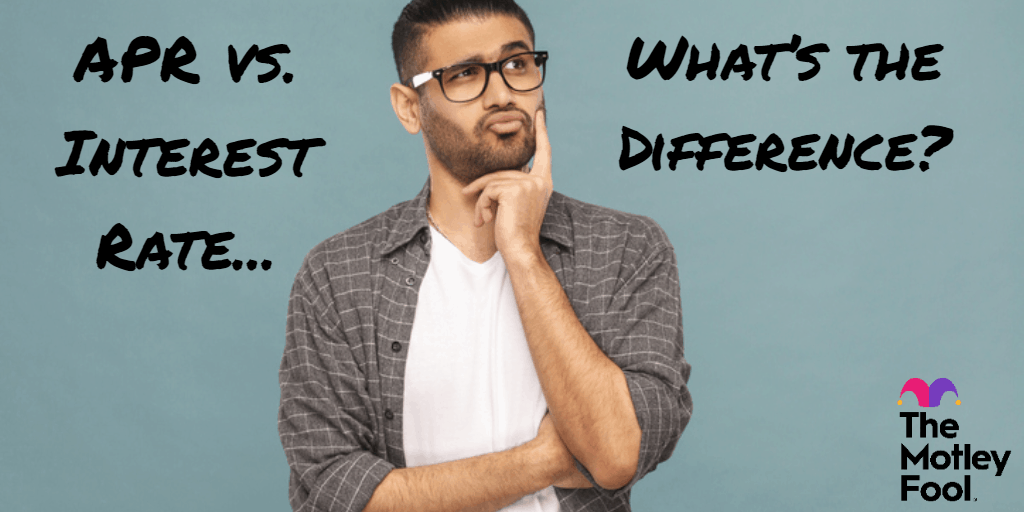If you own a credit card, you’re well aware that you’ll incur interest charges should you fail to pay off the balance by the due date. It’s super easy to find out the interest rate on your card. Just take a peek at your monthly statement; it’s typically near the bottom. But instead of your rate stated as “interest,” it will be in the form of an annual percentage rate (APR).
At first glance, the terms APR and interest rate seem to imply the same thing, but the two are actually quite different.
The difference between APR and interest rate
An interest rate refers to the rate at which interest is charged to your outstanding balance. On the other hand, APR includes the interest rate plus all applicable fees. Naturally, when fees enter into the equation, the result is an uptick in the interest rate that applies to your balance. APR is therefore a more accurate reflection of your actual borrowing costs.
For example, suppose you apply for a personal loan with a quoted interest rate of 8%. In that case, this isn’t the true rate you’ll end up paying. Rather, it will be slightly higher once you include the account fees, which may also include application fees, origination fees, processing fees, underwriting fees, credit insurance fees, etc.
As you can see, such fees can slowly add up! To obtain the most accurate quote for a personal loan, you should always refer to the APR rather than the interest rate alone.
However, when it comes to credit cards, there’s no need to distinguish between APR and interest rate: the terms refer to the same concept and can be used interchangeably. If your bank offers you a credit card with an interest rate of 14%, you can be sure the APR is identical.
Why are the APR and interest rates the same for credit cards?
So why is APR redundant in the context of credit cards? The reason is that credit card fees vary from person to person. Some card users may avoid fees entirely. Others may be subject to an abundance of fees, including late fees, foreign transaction fees, balance transfer fees, and cash advance fees. It depends entirely on one’s spending and payment habits.
Given the disparity in fees between credit card users, it’s not feasible for card issuers to calculate an APR. There is simply no reliable way for them to predict which types of fees card users will incur and in what amounts. The most sensible option for them is to quote the interest rate they charge on the outstanding balance as the APR.
Conversely, other credit products, such as personal loans and mortgages, come with fees that are non-negotiable and known in advance. As a result, the lender can easily determine the APR and disclose it to the borrower.
Why knowing your credit card APR is important
Whether you prefer APR or interest, it’s wise to be aware of the rates your card issuer will charge you on your outstanding balance. That’s right. We said “rates,” not “rate!” Card issuers charge a variety of rates, all of which apply to specific transactions and the type of balance you carry. Here are the different rates that accompany credit cards:
- Purchase rate: This is the regular rate that applies to purchases you charge to your card.
- Penalty rate: If you fall behind on payments, your card provider may replace your regular rate with a penalty rate, aptly named since it’s considerably higher.
- Balance transfer rate: This rate applies to the balance you transfer over from another card.
- Introductory rate: Your card may offer you a discounted rate (as low as 0%) for a few months to a year, after which it expires, and the purchase rate takes over.
- Cash advance rate: This is the rate you’ll pay for any cash you borrow against your available credit limit. It’s higher than the purchase rate, and interest charges begin accruing from day one, meaning there’s no grace period.
That’s a lot of rates to contend with, and if you’re not careful, the interest can quickly add up and overwhelm you financially. However, you can avoid excessive interest charges if you use your credit card responsibly and always pay off your balance at the end of each period.
Some offers on The Motley Fool are from our partners — it’s part of how we make money and keep this site going. But does that impact our reviews? Nope. Our commitment is to you. If a product isn’t any good, our review will reflect that, or we won’t list it at all. Also, while we aim to feature the best products available, we do not review every product on the market.

